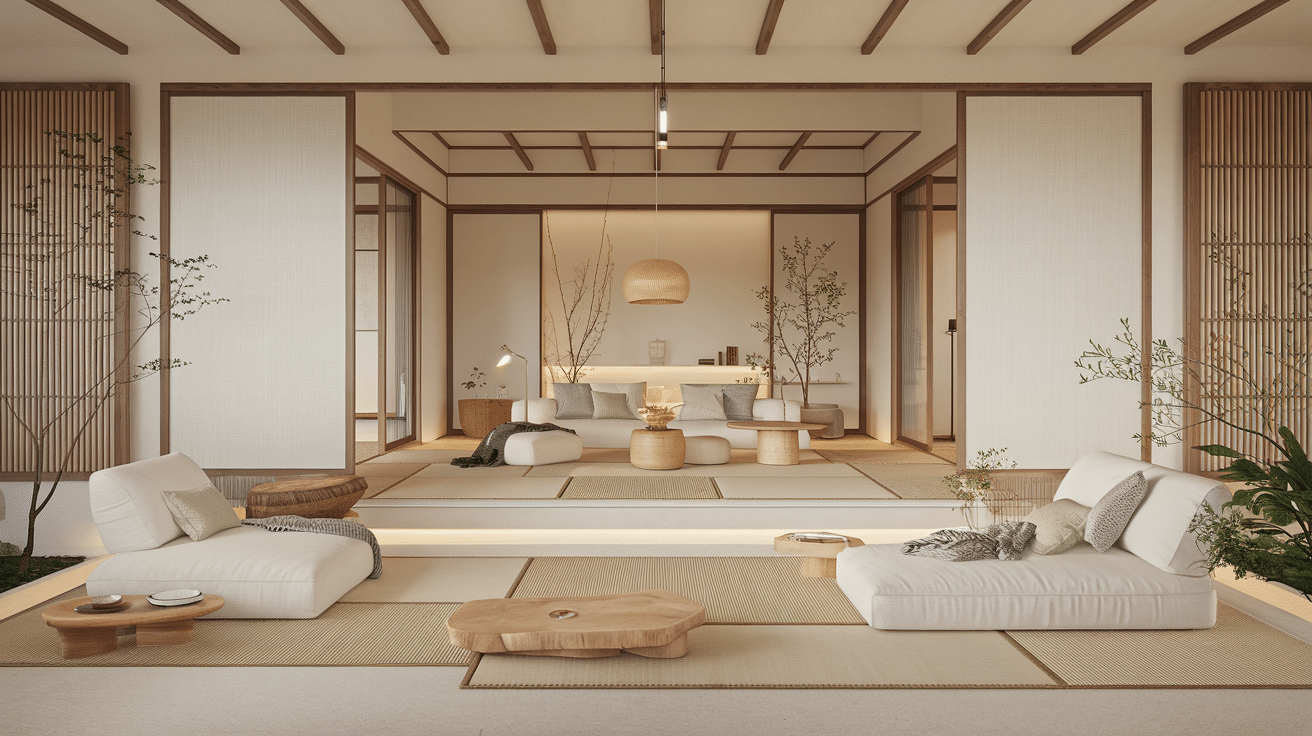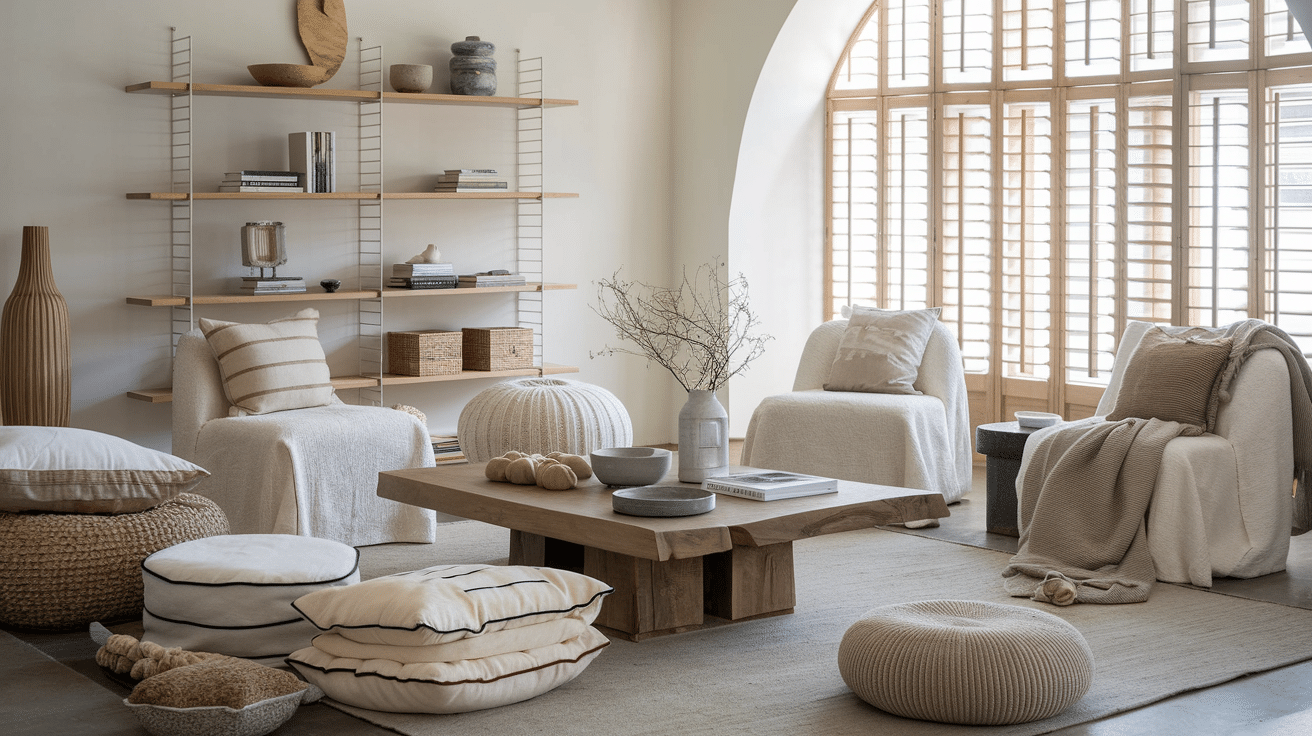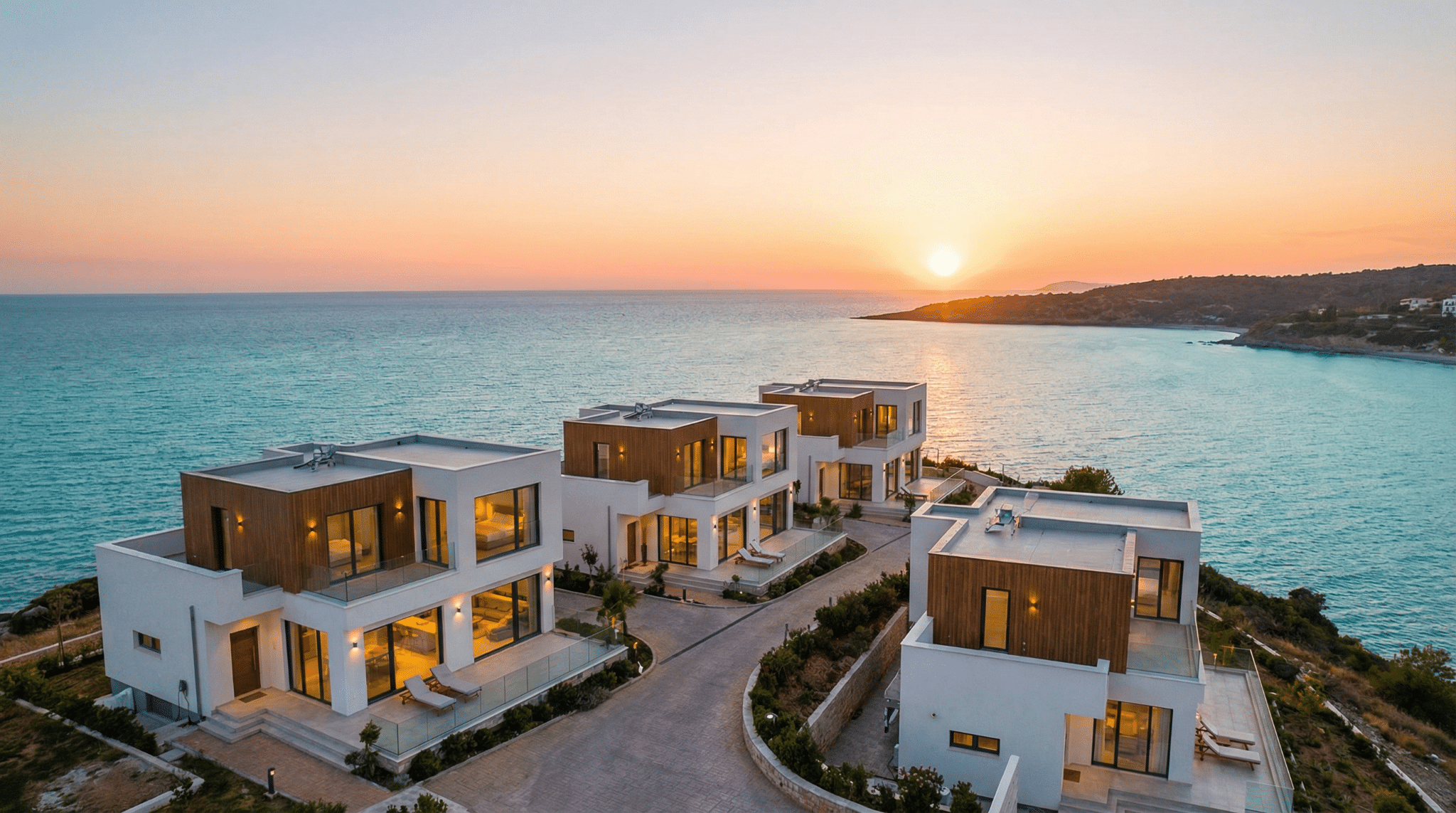Looking for a home style that combines simplicity with warmth? Japandi design offers a fresh approach to living spaces by mixing Japanese minimalism with Scandinavian comfort.
This blend creates rooms that feel both clean and cozy.
Many homeowners struggle to find a balance between function and style. Japandi solves this problem by focusing on useful items that also look good. The result? Spaces that work well and feel calm.
You’ll enjoy how Japandi rooms use natural materials, soft colors, and clean lines to make homes more peaceful. These spaces help reduce stress and create a feeling of well-being.
Ready to remake your living room? Here are 28 Japandi ideas you can use today to create a more balanced home environment.
Why Choose Japandi for Your Living Room?
Japandi style combines Japanese and Scandinavian design, focusing on simple lines and natural materials. It creates living rooms that feel both warm and clean.
This style helps reduce clutter, using fewer but more useful items in your space.
With soft earth tones like gentle browns and calm blues, Japandi rooms feel peaceful and inviting. The focus on quality craftsmanship means your living room stays stylish for years, not just seasons.
And since Japandi works in both small and large spaces, it’s a practical choice that makes smart use of what you have.
28 Popular Japandi Living Room Ideas
Japandi living rooms are known for their minimalist elegance, blending Japanese simplicity with Scandinavian functionality. These popular ideas will help you create a balanced and serene environment that reflects the beauty of both cultures.
1. Minimalist Elegance
A minimalist approach keeps your living room looking clean and calm. Choose only furniture items that serve a purpose and bring you joy. This style creates an open feeling and makes small spaces look bigger.
Focus on: Removing excess items and keeping only what you use and value.
2. Neutral Color Palette
Soft whites, greys, and earthy tones create a peaceful base for your living room. These colors work well together and help create a sense of space and light. They also help your mind rest when you enter the room.
Focus on: Picking 2-3 main neutral colors and using them throughout the space.
3. Natural Textures
Wood, bamboo, and stone bring warmth and life to your living space. These materials connect your home to nature and feel good to touch. They age well over time, getting more character as years pass.
Focus on: Mixing different natural textures to add depth without adding clutter.
4. Sustainable Furniture
Eco-friendly pieces show care for both your home and the planet. Look for items made from sustainable woods or recycled materials. These pieces often have better craftsmanship and last longer.
Focus on: Checking where and how your furniture is made before buying.
5. Tatami-Inspired Seating
Low-profile, floor seating creates a casual and relaxed feeling. This style opens up your visual space and feels less formal. It works well for small gatherings and quiet reading time.
Focus on: Cushions and low tables that match in height for comfort and function.
6. Muted Pastels
Soft pastel colors add gentle warmth without being loud or showy. They work well as small touches in pillows, throws, or small items. These colors bring life to a room without taking over.
Focus on: Using pastels as accents against neutral backgrounds.
7. Incorporating Greenery
Plants add life, color, and better air to your living room. Choose plants with simple shapes that match your style. Even a few small plants can make a big change in how a room feels.
Focus on: Low-care plants in simple pots that match your color scheme.
8. Wooden Accents
Wood items bring natural warmth and texture to your space. Look for pieces with clean lines and smooth finishes. Raw or lightly finished wood works best for this style.
Focus on: Wood tones that match or complement each other for a pulled-together look.
9. Open Shelving
Simple shelves let you show useful and pretty items with care. This storage option keeps things handy while adding style. It also helps you keep only what you truly want to see each day.
Focus on: Leaving plenty of empty space on shelves for a clean, open look.
10. Geometric Patterns
Small patterns in rugs or pillows add interest without being loud. These shapes bring order and calm to your living room. They work best when used in small areas rather than all over.
Focus on: Simple shapes and limited colors in your pattern choices.
11. Low Lighting
Soft lighting creates a warm, restful mood in your living room. Use paper lamps, wall sconces, or floor lights rather than bright overheads. This type of light is kind to your eyes and mind after a long day.
Focus on: Lights at different heights to create layers of gentle light.
12. Multi-Functional Furniture
Smart pieces that serve more than one use save space and reduce clutter. Think tables that can be desks, or storage that works as seating. These items bring real value to smaller homes.
Focus on: Quality pieces that work well for all their planned uses.
13. Japanese Sliding Doors
Shoji screens help divide space while letting light flow through. They can hide mess or create private areas when needed. These light dividers take less space than swing doors.
Focus on: Simple frames and good tracks that slide well for years.
14. Scandi Simplicity
Nordic design adds warmth and function to Japanese calm. This mix gives you the best of both worlds – beauty and daily use. It creates spaces that look good and work well.
Focus on: Finding the middle point between two simple styles.
15. Bold Black Elements
Small touches of black add depth and focus to your living room. A black frame, lamp base, or small table can ground a space. These dark spots help your eyes rest and notice other items more.
Focus on: Using black in thin lines or small areas for the most effect.
16. Layering Natural Fabrics
Mixing cotton, wool, and linen adds comfort and visual interest. These fabrics feel good to touch and look better with age. They bring softness to a style that could feel too hard or bare.
Focus on: Different textures in the same color family for subtle depth.
17. Harmonious Artworks
Simple, nature-based art adds personality without noise. Choose pieces with clean lines and open space within them. Black and white or single-color works often fit this style best.
Focus on: Art that gives your eye a place to rest, not work harder.
18. Mixing Wood and Metal
Using both materials creates nice balance in your living room. The warmth of wood softens the cool feel of metal. This mix feels both old and new at the same time.
Focus on: Thin metal frames with wood tops or seats for a light look.
19. Rattan and Wicker
These woven items add texture and a hand-made quality. They bring a touch of nature and human craft to your room. Light-colored woven pieces work well in most Japandi spaces.
Focus on: Simple shapes that show off the weaving pattern.
20. Zen-Inspired Corner
A small, clear space for quiet thought brings peace to your home. Even a tiny area with a cushion and plant can serve this purpose. This spot offers a place to slow down in a busy life.
Focus on: Keeping this area very simple and free from daily clutter.
21. Scandinavian Lighting Fixtures
Clean, modern lights add both function and style to your room. Paper or fabric shades create a soft, warm glow. Look for simple shapes with good craftsmanship.
Focus on: Lights that look good even when they’re turned off.
22. Tatami Mats
These classic floor mats add texture and a touch of history. They feel warm to walk on and look neat and tidy. The slight give under foot makes standing and sitting more comfy.
Focus on: Real or good fake tatami with simple edges.
23. Rustic Accents
Small items with natural, rough finishes add life to clean spaces. Look for hand-made pottery, raw woods, or stone items. These pieces bring a human touch to a neat room.
Focus on: Items that show the marks of being made by hand.
24. Neutral Toned Rugs
Soft floor coverings add warmth and comfort to your living room. Choose rugs with simple patterns or no pattern at all. Natural fibers like wool, cotton, or jute work best.
Focus on: Rug size and shape that fits your seating area just right.
25. Open Floor Plan
A room without too many walls feels airy and lets light move freely. This layout helps people connect and makes small spaces feel bigger. It also lets you change how you use areas over time.
Focus on: Using rugs, low tables, or plants to mark different areas instead of walls.
26. Handmade Textiles
Cloth items made by skilled workers bring soul to modern spaces. These pieces tell a story and connect your home to craft history. They often age better than machine-made goods.
Focus on: Simple patterns and natural dyes in hand-made items.
27. Simple Fireplace Design
A clean-lined fire feature adds real warmth and a focus point. Modern, boxy styles fit the Japandi look well. Even fake or candle fireplaces can create this warm effect.
Focus on: The area around the fire being open and clear of too much stuff.
28. Low Comfortable Sofas
Seating that is closer to the floor follows both Japanese and Danish styles. These sofas feel casual yet neat. By keeping sight lines open, they often make rooms look bigger.
Focus on: Good back support even in low-sitting furniture.
How to Achieve Japandi Style in Your Living Room?
Do you want to make your living room calm and useful? The Japandi style might be for you. This style mixes Japanese and Nordic design to create clean, warm, and simple spaces.
1. Mixing Japanese and Scandinavian Elements Seamlessly
- Choose clean lines and simple forms
- Select items with visible craftsmanship
- Use natural woods, bamboo, and stone
- Add paper lamps or simple light fixtures
- Mix plain textiles with subtle patterns
2. Creating Balance with Colors, Materials, and Furniture
- Start with neutral whites, beiges, and grays
- Add warm wood tones in different shades
- Mix rough and smooth textures
- Balance hard surfaces with soft textiles
- Keep furniture low, with open space between pieces
Conclusion
These Japandi ideas we shared combine Japanese and Scandinavian design elements to create living rooms that are both useful and calm.
Using clean lines, neutral colors, and natural items helps make your space a place for rest. Each item in your home should serve a function and bring you joy.
Our main ideas focus on simple, useful furniture, warm woods with natural textures, soft muted colors, plants with natural light, and low comfy seating.
You don’t need to use all these tips at once – start with what fits your home now and build from there. The aim is to create a room that makes you feel good when you enter.
Begin with one small change today, and watch how your space becomes more calm and inviting.
Frequently Asked Questions (FAQs)
Is Japandi Still Trendy?
Yes, Japandi style remains popular in 2025. Its focus on simplicity, natural materials, and comfort fits well with today’s home design needs for both style and function.
Is Japandi Style Expensive?
Japandi style can fit any budget. While quality pieces cost more, you can start small with a few key items. Natural materials and simple designs often last longer, making them worth the cost over time.




































